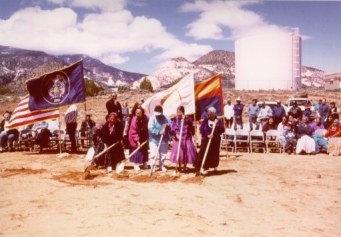|
|
 |
 |
 |
 |
 |
 |
|
|
Native American Images of American Indians
|
 |
 |
 |
 |
|
|
|
Native American Tribal Life
American Indians are those peoples who were on the North American continent before the arrival of Christopher Columbus in 1492. There were hundreds of different tribes native to both North and South America. Historically we have called these Native peoples Indians by mistake - Columbus thought he had reached the Continent of India. Today we use the term American Indian because that is the term used in the Constitution . Indian tribes call themselves by many names. They might be known by both an English name and a name in their tribal language. The Navajo call themselves Dine' which means "the People." The Tohono O'odham (People of the Desert) were known for many years by the name Papago.
The Constitution of the United States specifically refers to Indian tribes where it says that "Congress shall have the power to regulate Commerce with foreign nations, among the several states, and with the Indian tribes."
There are over five hundred and fifty American Indian tribes that have tribal governments that are recognized by the United States in a government to government relationship. There are also approximately 300 federal Indian reservations in the United States. On an Indian reservation the tribal government performs many of the same functions that State governments do. There are tribal court systems, departments of justice and police forces on most reservations.
Indian reservations are usually lands that the tribes kept when they entered into treaties with the federal government. Indian Treaties have the same recognition under federal law as do treaties with foreign governments such as France or Germany. Some Indian Reservations are land bases that are larger than some states. The Navajo Reservation is approximately 14,000,000 acres of land. The State of Massachusetts is only 5,284,480 acres. The Wind River Reservation in Wyoming is 1,888,000 acres. The State of Rhode Island is 776,960 acres. There are twelve Indian Reservations that are larger than Rhode Island and nine reservations larger than Delaware (1,316,480 acres). The Navajo Reservation, which is the largest, is larger than nine States (Maryland, Vermont, New Hampshire, Massachusetts, New Jersey, Hawaii, Connecticut, Delaware and Rhode Island).
American Indians are also a racial group who sometimes face discrimination the same as African Americans do. In fact, before the civil rights laws were enacted, in some states you could find three separate drinking fountains labeled "whites," "Colored" and "Indian." There were also three sections in some movie theaters. All of the civil rights laws that protect people from discrimination because of race or color or national origin also protect American Indians.

Recently the Department of Justice sued a school district in Utah for not having a high school in the remote community of Navajo Mountain. The Navajo and Paiute high school age students who live in this community all had to go more than 90 miles from home and live in dormatories or with relatives and attend boarding schools operated by the Bureau of Indian Affairs. The school district had built high schools in the communities where non-Indians lived. The school district argued that because the Indians live on a reservation they didn't have a right to a public school built and operated by the district. American Indians are citizens of the United States and of the States where they live. The court ruled that even though they live on an Indian reservation, American Indians have a right to receive all of the same services that state and county governments offer to all other citizens of the state. The settlement of this lawsuit required the school district to build a new high school in this community. The photograph above was taken at the ground breaking for the new school. A temporary high school program began in September 1997. This lawsuit was the first time the Civil Rights Division had ever enforced the education statutes on behalf of American Indians. This lawsuit was originally filed by Indian students and their parents. Both the Navajo Nation and the United States joined in the lawsuit to support the students and their parents.
Click here to view more images
|
|
|
|
|
|
 Native American Nations
Native American Nations
